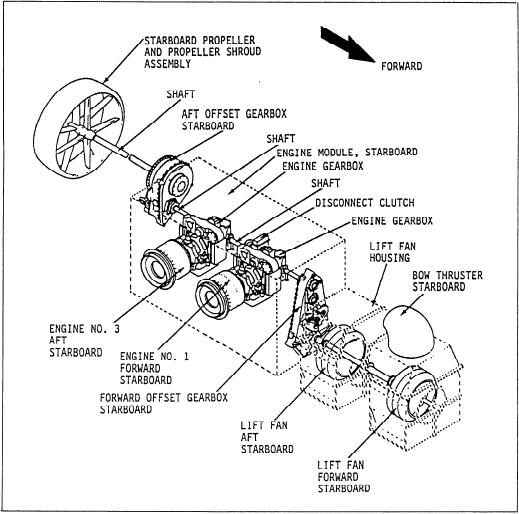
has one discharge volute directed upward to the bow
are driven by the TF40B gas turbine engines through
right-angle gearboxes, as illustrated in figure 7-11. The
thruster assembly.
lift fan control system uses the output of the TF40B
Solenoid-Operated Valves
engines, throughshafts, and reduction gears to turn the
fans that provide air to the cushion and the bow thrusters.
Four 4-way, 3-position solenoid-operated valves
Sixty percent of the air goes to the cushion and forty
a l l o w the engineer to control the cushion vanes.
percent goes to the bow thrusters. The air going to the
Momentary push-button switches located on the C&C
cushion can be increased or decreased by opening or
keyboard allow the operator to control these valves. (See
closing the four sets of cushion vanes. Let's take a look
fig. 7-12.) Each valve has an A and a B solenoid.
at the components of this system and how they work
Solenoid A energizes when the VANE CLOSE push
button is depressed. Solenoid B energizes when the
Lift Fans
VANE OPEN push button is depressed. Depressing the
push button allows hydraulic pressure to be applied to
As described earlier, there are two identical lift fan
the actuator, which causes the cushion vane to operate.
assemblies port and starboard. Each side has two
T h e s e valves have manual overrides in case an
double-discharge centrifugal fans, four air inlets, four
emergency occurs.
discharge ducts, and eight flow control vanes. Each air
inlet is protected by a foreign object damage (FOD)
Cushion Vanes
screen. Each fan is installed on an individual shaft.
These shafts are connected to each other and then to the
The function of the cushion vanes is to allow the
engineer to control the amount of airflow going to the
Figure 7-11.--TF40B propulsion and drive system arrangement.
7-9

